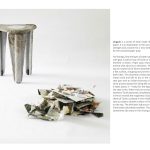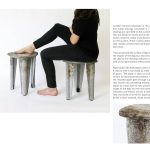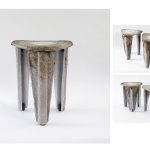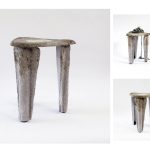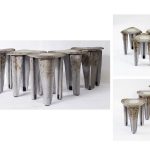Llegado is a series of stool made of pulp from the recycled paper. It is an exploration in the use of paper pulp’s structural strength and a search for a new kind of material authenticity for the recycled paper pulp.
For the legs, first the layer of water saturated paper pulp mixed with glue is laid on top of Tyvek on which the outline of each element is drawn. Paper pulp mixture is formed within this outline with about 1cm thickness. This layer is then placed on top of a wood rod of 33mm diameter in its length direction on a flat surface, wrapping around the rod with flanking part on both sides. This assembly is then placed on top of the curved metal mesh and left to dry in the natural atmosphere.
Architecture, Construction & Design Awards 2018
First Award | Product Design – Fashion, Lifestyle, and Accessories (Concept)

| Project Details | |
| Architect: | Taeg Nishimoto |
| Country: | United States |
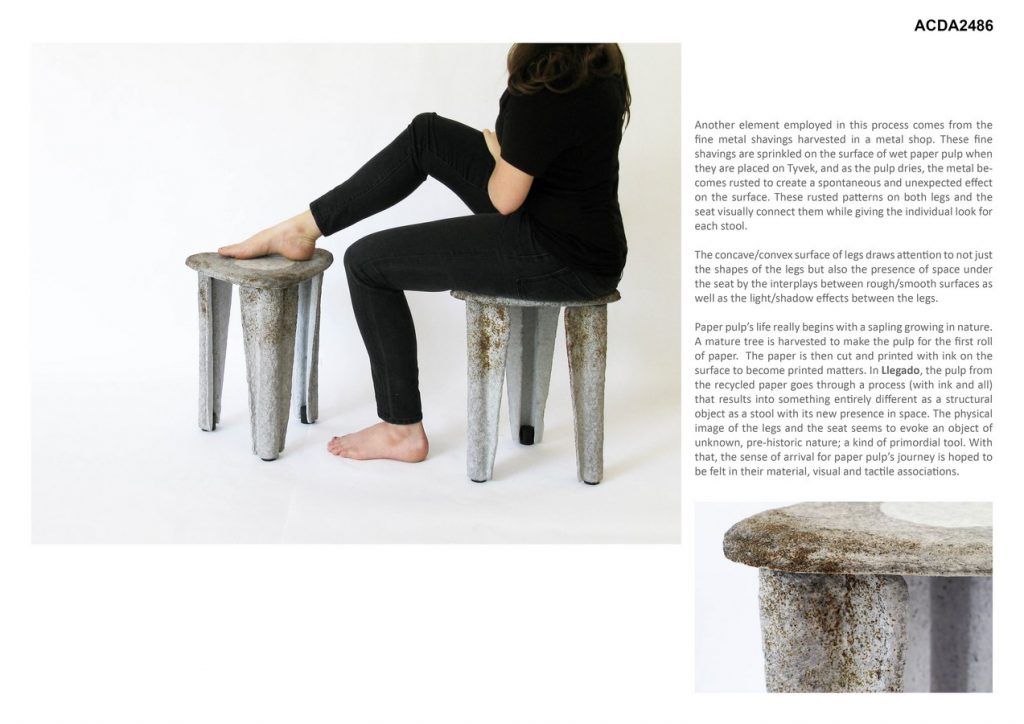
©Taeg Nishimoto
The seat part with an initial thickness of 3cm of pulp follows the same process except for being left on a flat surface for drying. It takes about 3 – 4 days for the legs and about 8-10 days for the seat to dry. When they are completely dry, the surface attached to Tyvek becomes completely smooth and the side left in the air reveals the roughness of pulp. For the seat, a circular sheet of Tyvek is placed in the middle during the drying process to create a smooth surface in the center of rough surface on the top. The thickness reduces to about 50 – 60 percent of initial water saturated condition. The flanking parts of the legs sometimes also warp in this drying process.
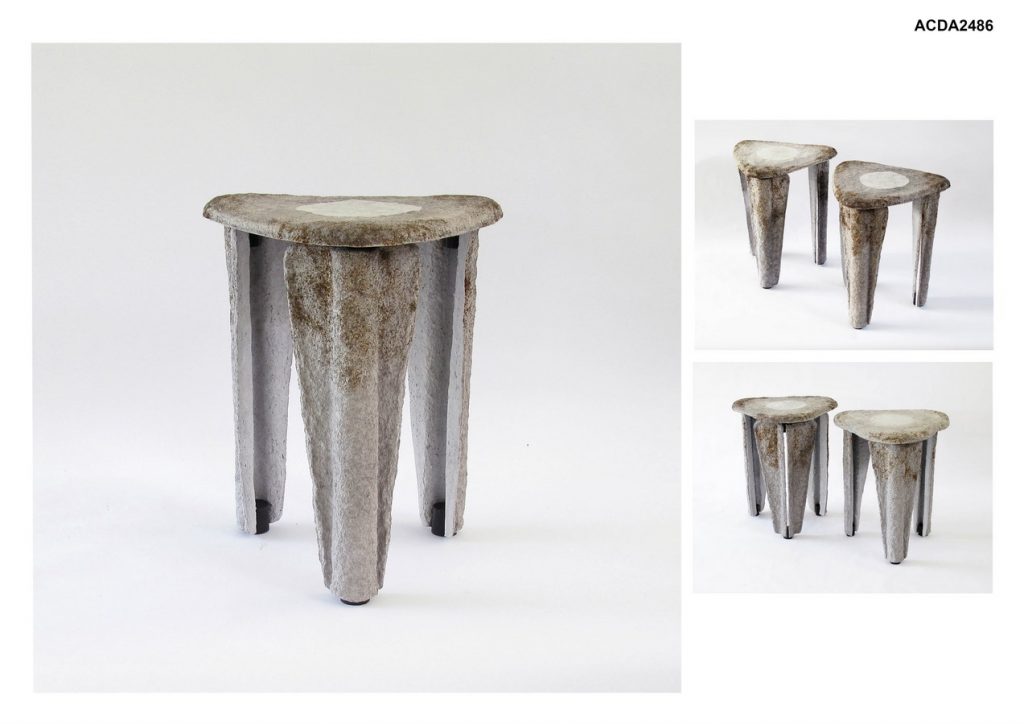
©Taeg Nishimoto
Another element employed in this process comes from the fine metal shavings harvested in a metal shop. These fine shavings are sprinkled on the surface of wet paper pulp when they are placed on Tyvek, and as the pulp dries, the metal becomes rusted to create a spontaneous and unexpected effect on the surface. These rusted patterns on both legs and the seat visually connect them while giving the individual look for each stool.
The concave/convex surface of legs draws attention to not just the shapes of the legs but also the presence of space under the seat by the interplays between rough/smooth surfaces as well as the light/shadow effects between the legs.
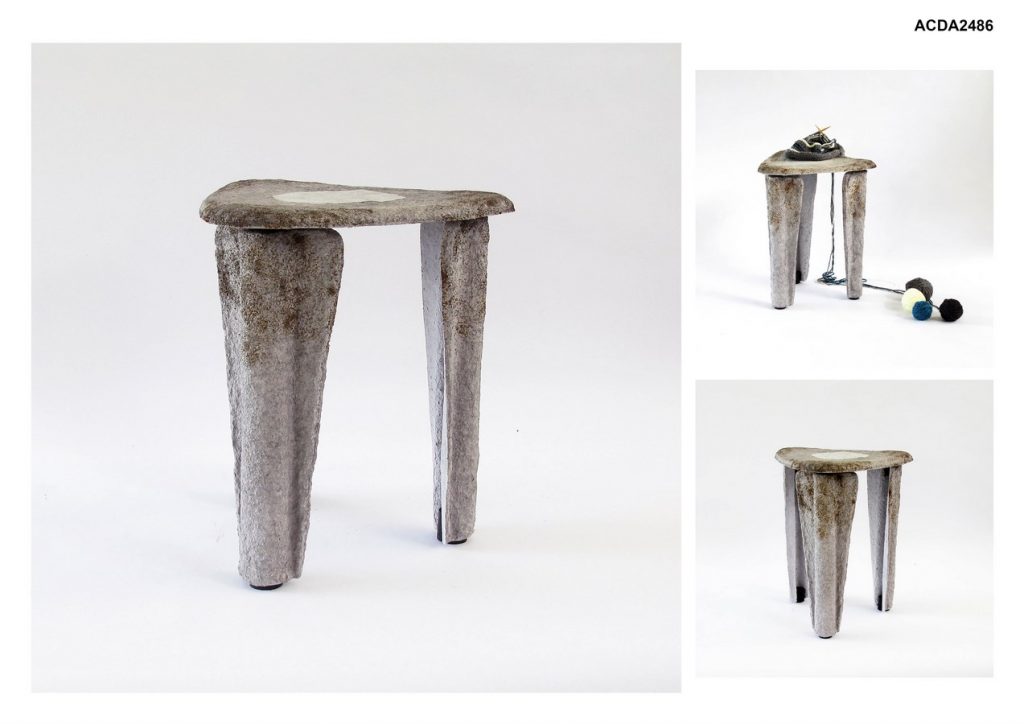
©Taeg Nishimoto
Paper pulp’s life really begins with a sapling growing in nature. A mature tree is harvested to make the pulp for the first roll of paper. The paper is then cut and printed with ink on the surface to become printed matters. In Llegado, the pulp from the recycled paper goes through a process (with ink and all) that results into something entirely different as a structural object as a stool with its new presence in space. The physical image of the legs and the seat seems to evoke an object of unknown, pre-historic nature; a kind of primordial tool. With that, the sense of arrival for paper pulp’s journey is hoped to be felt in their material, visual and tactile associations.
- ©Taeg Nishimoto
- ©Taeg Nishimoto
- ©Taeg Nishimoto
